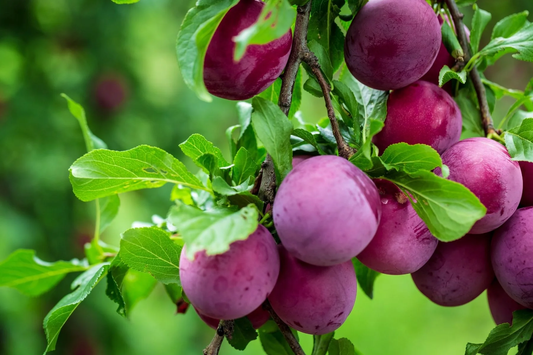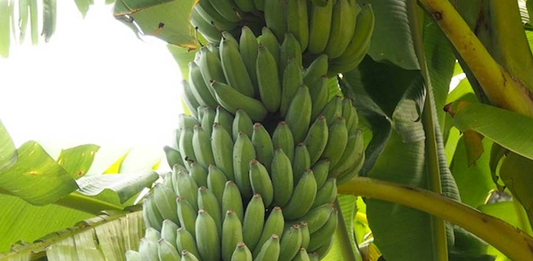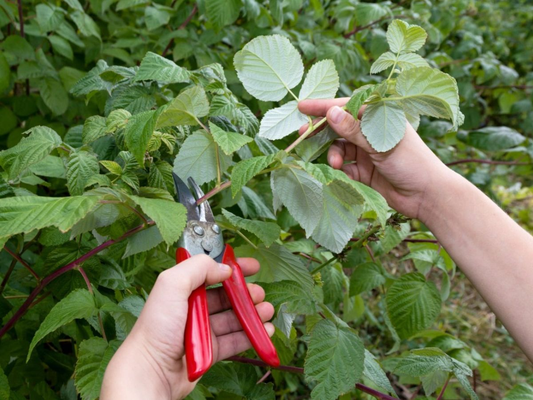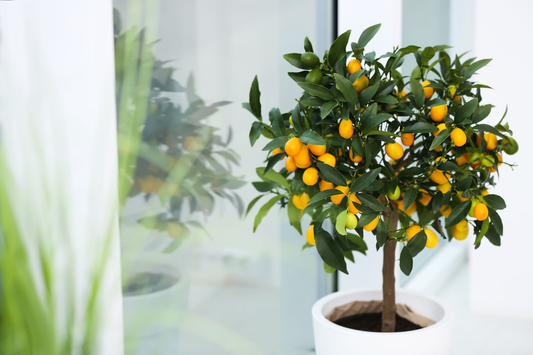Your Garden's Missing Piece: The Best Herbs for Outdoor Gardens Explained
Share
Table of Contents
1. Introduction
Herbs have been cherished for centuries, not just for their culinary uses but also for their medicinal, aromatic, and aesthetic qualities. Incorporating herbs into outdoor gardens is an excellent way to add functionality and beauty to your space. Whether you are an experienced gardener or a beginner, growing herbs outdoors offers a range of benefits that can transform your gardening experience and enhance your lifestyle.
Why Herbs Are Essential for Outdoor Gardens
- Culinary Uses: Freshly harvested herbs elevate your cooking, providing a burst of flavor that dried store-bought alternatives cannot match.
- Medicinal Benefits: Many herbs, like mint and rosemary, offer health benefits and are often used in teas, balms, or infusions.
- Easy Maintenance: Most herbs are hardy, require minimal care, and thrive in outdoor environments.
Benefits of Growing Herbs Outdoors
-
Freshness:
- Enjoy herbs at their peak flavor by harvesting them fresh from your garden.
- Say goodbye to wilted supermarket herbs with limited shelf life.
-
Cost-Saving:
- Reduce grocery expenses by growing your frequently used herbs like basil, parsley, and cilantro.
- Eliminate the need to constantly buy packaged herbs.
-
Improved Aesthetics:
- Herbs like lavender, rosemary, and thyme double as ornamental plants, adding beauty to your garden.
- Create a lush, green space that attracts pollinators such as bees and butterflies.
Focus of the Blog
In this blog, we aim to guide you through identifying the best herbs for outdoor gardens. Whether you want low-maintenance options, herbs for culinary delights, or versatile plants with multiple uses, this guide will provide all the information you need to create a thriving herb garden.

2. Why Grow Herbs in an Outdoor Garden?
Outdoor herb gardening offers a combination of practicality, environmental benefits, and therapeutic rewards. By growing your own herbs, you not only enjoy fresh and nutritious ingredients but also contribute positively to the environment while creating a serene and beautiful space. Let’s explore the reasons why herbs are a fantastic addition to any outdoor garden.
2.1 Health and Culinary Benefits
-
Nutritional Advantages of Fresh Herbs:
- Herbs like parsley, cilantro, and basil are rich in vitamins A, C, and K, as well as essential antioxidants.
- Fresh herbs are free from preservatives and provide higher nutrient content than dried counterparts.
-
How Fresh Herbs Enhance the Flavor of Meals:
- Freshly picked herbs add a burst of flavor to dishes, from salads to stews.
- Common examples include:
- Basil: Perfect for pasta, pizza, and pesto.
- Rosemary: Enhances roasted meats and potatoes.
- Mint: Ideal for beverages, desserts, and sauces.
2.2 Environmental Benefits
-
Attracting Pollinators:
- Herbs such as lavender and thyme attract bees, butterflies, and other pollinators, promoting biodiversity.
- Pollinators help in the fertilization of nearby plants, improving overall garden productivity.
-
Reducing Carbon Footprint:
- Growing herbs at home eliminates the need for transportation and packaging associated with store-bought herbs.
- Using your own herbs reduces waste from unused, expired produce.
2.3 Aesthetic and Therapeutic Value
-
Herbs as Ornamental Plants:
- Herbs like sage, chives, and lavender bring color and texture to your garden.
- They can be used as borders, ground covers, or accents in garden beds.
-
Stress-Relieving Benefits of Gardening:
- Caring for herbs provides a calming and meditative activity.
- The aromatic qualities of herbs like mint and basil create a soothing environment.

3. Factors to Consider When Choosing Herbs for Outdoor Gardens
Selecting the right herbs for your outdoor garden requires careful consideration of various environmental and practical factors. Each herb has unique requirements for thriving, and understanding these can help you create a successful and low-maintenance garden.
3.1 Climate and Weather Conditions
-
Importance of Matching Herbs to Local Climate:
- Warm-weather herbs like basil and oregano thrive in sunny, hot climates.
- Cool-weather herbs such as cilantro and parsley prefer moderate temperatures.
- Consider hardy perennials like thyme and chives for regions with colder winters.
3.2 Sunlight and Space Requirements
-
Herbs for Sunny Spots:
- Examples: Rosemary, thyme, sage, and basil flourish in full sun (6-8 hours daily).
- Ideal for open garden beds or containers placed in sunny areas.
-
Herbs for Shady Areas:
- Examples: Mint, chervil, and parsley grow well in partial to full shade.
- Perfect for spaces with limited direct sunlight, like under trees or along shaded walls.
3.3 Soil Type and Drainage
-
Ideal Soil Conditions for Herb Growth:
- Most herbs prefer well-draining, loamy soil with a neutral pH (6.0-7.5).
- Sandy soils are best for Mediterranean herbs like rosemary and thyme.
- Moist, rich soil is ideal for herbs like mint and basil.
-
Improving Drainage:
- Use raised beds or containers to enhance drainage in heavy clay soils.
- Mix organic matter or sand into the soil for better water flow.
3.4 Maintenance Needs
-
Low-Maintenance Herbs:
- Examples: Lavender, thyme, and oregano require minimal watering and care.
- These herbs are drought-tolerant and ideal for beginners.
-
High-Maintenance Herbs:
- Examples: Basil and cilantro need consistent watering and protection from extreme heat or cold.
- These herbs may require frequent pruning to promote growth and prevent bolting.
4. Top 10 Best Herbs for Outdoor Gardens
Outdoor gardens thrive with the addition of herbs that are not only versatile in their uses but also relatively easy to grow. Here’s a detailed list of the top 10 best herbs for outdoor gardens, including their ideal growing conditions, benefits, and tips for cultivation.
4.1 Basil
-
Ideal Conditions for Growing:
- Thrives in warm temperatures (70-90°F).
- Requires full sun (6-8 hours daily) and well-draining soil.
- Needs consistent watering but avoid waterlogging.
-
Common Uses in Cooking:
- Main ingredient in pesto and tomato-based dishes.
- Used fresh in salads, sandwiches, and as a pizza topping.
4.2 Mint
-
Varieties of Mint:
- Peppermint: Stronger flavor, great for teas and desserts.
- Spearmint: Milder taste, ideal for mojitos and savory dishes.
- Pros and Cons of Growing Mint Outdoors:
| Pros | Cons |
|---|---|
| Fast-growing and easy to maintain. | Highly invasive; spreads quickly and can overtake other plants. |
| Thrives in partial shade and a variety of soils. | Requires containment to prevent unwanted spreading. |
4.3 Rosemary
-
Benefits as a Perennial Herb:
- Withstands drought and thrives in sunny, dry climates.
- Remains productive for years with proper care.
-
Companion Planting Tips:
- Acts as a natural pest deterrent for carrots, beans, and cabbage.
- Plant alongside other drought-tolerant herbs like thyme and sage.
4.4 Thyme
-
Varieties of Thyme:
- English Thyme: Traditional culinary variety.
- Lemon Thyme: Offers a citrusy flavor, ideal for seafood dishes.
-
Low-Water Requirements:
- Thrives in well-draining soil with minimal watering.
- Perfect for xeriscaping or drought-prone areas.
4.5 Parsley
-
Flat-Leaf vs. Curly Parsley:
- Flat-Leaf: Preferred for cooking due to its stronger flavor.
- Curly: Often used as a decorative garnish.
-
Nutritional Benefits:
- Rich in vitamin C, iron, and folate.
- Acts as a natural diuretic, supporting kidney health.
4.6 Oregano
-
Culinary Significance:
- A staple in Mediterranean and Italian cuisine.
- Perfect for pizza, pasta sauces, and marinades.
-
How to Harvest for Maximum Yield:
- Harvest regularly to encourage new growth.
- Snip stems just above a leaf pair for continuous production.
4.7 Chives
-
Ideal Growing Conditions:
- Thrives in full sun but tolerates partial shade.
- Prefers rich, well-drained soil with consistent moisture.
-
Use in Pest Control in Gardens:
- Chives repel pests like aphids and Japanese beetles.
- Plant near roses or tomatoes for natural pest deterrence.
4.8 Dill
-
Short Life Cycle but High Utility:
- Dill grows quickly and can be harvested within weeks.
- Best grown successively for a continuous supply.
-
Common Pairings in Cooking:
- Used in pickling, salad dressings, and seafood dishes.
- Pairs well with potatoes, cucumbers, and yogurt-based sauces.
4.9 Lavender
-
Dual Purpose: Culinary and Ornamental:
- Used in baking, teas, and flavoring desserts.
- Acts as a beautiful ornamental plant with fragrant blooms.
-
Its Role in Repelling Pests:
- Repels mosquitoes, moths, and flies.
- Plant near seating areas for natural pest control.
4.10 Cilantro
-
Heat Tolerance Issues and How to Overcome Them:
- Cilantro bolts quickly in hot weather.
- Plant in partial shade and use successive planting for a steady supply.
-
Popular Recipes Using Cilantro:
- Essential in guacamole, salsa, and curries.
- Commonly used in Southeast Asian and Middle Eastern cuisines.
These top 10 herbs provide a diverse range of flavors, uses, and benefits, making them ideal candidates for outdoor gardens.

5. Pros and Cons of Growing Herbs in Outdoor Gardens
Growing herbs in outdoor gardens can be incredibly rewarding, but it also comes with challenges. Below is a detailed comparison of the pros and cons of cultivating herbs outdoors.
| Pros | Cons |
|---|---|
| Access to fresh herbs year-round, depending on climate and seasonal planning. | Some herbs, such as mint, can be highly invasive and take over garden spaces. |
| Enhances garden aesthetics with lush greenery and vibrant flowers. | Requires regular maintenance, including pruning, weeding, and watering. |
| Attracts beneficial pollinators like bees and butterflies, improving biodiversity. | Herbs are vulnerable to outdoor pests such as aphids and slugs. |
| Reduces grocery costs by providing a steady supply of fresh herbs. | Limited growing season in colder climates unless protective measures are taken. |
By carefully managing these factors, gardeners can maximize the benefits of growing herbs while minimizing potential drawbacks.
6. Step-by-Step Guide to Planting and Caring for Outdoor Herbs
To successfully grow outdoor herbs, proper planning, planting, and maintenance are essential. This step-by-step guide covers everything you need to know about cultivating a thriving herb garden.
6.1: Preparation
-
Selecting the Right Location:
- Choose a spot that receives 6–8 hours of sunlight daily for most herbs.
- Consider partial shade for herbs like mint and cilantro that prefer cooler conditions.
-
Testing and Amending Soil:
- Use a soil test kit to determine pH and nutrient levels.
- Amend soil with compost or organic matter to improve fertility and drainage.
6.2: Planting Techniques
-
Starting from Seeds vs. Transplants:
- Seeds: Cost-effective but take longer to germinate and grow.
- Transplants: Convenient for faster results, ideal for beginners.
-
Spacing and Depth Requirements:
- Basil: 12–18 inches apart, sow seeds 1/4 inch deep.
- Mint: 12 inches apart, but grow in containers to prevent spreading.
- Chives: 4–6 inches apart, seeds just below the soil surface.
6.3: Ongoing Care
-
Watering Schedules:
- Most herbs prefer soil that is consistently moist but well-drained.
- Drought-tolerant herbs like rosemary and thyme require less frequent watering.
-
Fertilization Tips:
- Use organic fertilizers such as compost tea or fish emulsion every 4–6 weeks.
- Avoid over-fertilizing, as it can lead to excessive leaf growth and reduced flavor.
6.4: Pruning and Harvesting
-
Pruning:
- Regular pruning encourages bushy growth and prevents herbs from flowering too early.
- Remove dead or yellowing leaves to maintain plant health.
-
Harvesting:
- Harvest in the morning for the best flavor and aroma.
- Use sharp scissors or pruning shears to avoid damaging plants.
- Harvest up to one-third of the plant at a time to allow regrowth.

7. Common Problems and Solutions in Outdoor Herb Gardening
Outdoor herb gardens are not without their challenges. Understanding and addressing common issues such as pests, diseases, and environmental stresses can help you maintain a thriving herb garden.
7.1: Pest Issues
-
Common Pests:
- Aphids: Small, soft-bodied insects that suck sap from leaves, causing curling and yellowing.
- Caterpillars: These leaf-eating pests can quickly defoliate plants.
- Spider Mites: Tiny pests that cause speckled discoloration on leaves.
-
Natural Remedies:
- Introduce beneficial insects like ladybugs and lacewings to control aphid populations.
- Use neem oil or insecticidal soap to deter pests without harming the plants.
- Hand-pick caterpillars and other larger pests when spotted.
7.2: Disease Concerns
-
Common Fungal Infections:
- Powdery Mildew: A white, powdery fungus that covers leaves and stems, stunting growth.
- Root Rot: Caused by overwatering or poor drainage, leading to wilting and eventual plant death.
- Rust: Orange or brown spots on leaves, common in humid climates.
-
Prevention Strategies:
- Plant herbs with good air circulation and avoid overcrowding.
- Water at the base of plants to keep foliage dry and reduce fungal spread.
- Remove and discard infected leaves or plants to prevent further spread.
7.3: Environmental Challenges
-
Coping with Extreme Heat:
- Provide shade cloth or mulch to protect plants from excessive heat.
- Water deeply during early mornings or late afternoons to reduce evaporation.
-
Frost Protection:
- Cover herbs with frost blankets or move potted plants indoors during cold snaps.
- Choose frost-tolerant herbs like thyme and sage for colder climates.
-
Dealing with Heavy Rainfall:
- Ensure proper soil drainage to prevent waterlogging and root rot.
- Consider planting herbs in raised beds to minimize flooding risks.
By being proactive and applying these solutions, you can overcome most challenges in outdoor herb gardening and keep your plants healthy.
8. Designing Your Herb Garden
Creating a functional and beautiful herb garden involves thoughtful planning and design. From layout options to pairing herbs with other plants, the right design can maximize both utility and visual appeal.
8.1: Layout Ideas
-
Raised Beds:
- Provide excellent drainage and prevent waterlogging.
- Ideal for herbs like basil, parsley, and thyme.
- Easy to manage and reduce weed growth.
-
Pots and Containers:
- Perfect for controlling invasive herbs like mint.
- Allow flexibility to move herbs based on sunlight needs.
- Use decorative pots to enhance garden aesthetics.
-
In-Ground Planting:
- Suitable for herbs like rosemary and oregano that thrive in permanent spots.
- Allows for larger herb gardens with mixed varieties.
8.2: Companion Planting
-
Best Plants to Pair with Herbs:
- Tomatoes and basil: Basil enhances tomato growth and deters pests.
- Carrots and chives: Chives repel carrot flies.
- Cabbage and dill: Dill attracts beneficial insects that protect cabbage.
-
Benefits of Companion Planting:
- Improves soil health by balancing nutrient use.
- Helps naturally control pests and diseases.
- Encourages biodiversity in your garden.
8.3: Aesthetic Tips
-
Creating Visually Appealing Patterns:
- Plant herbs in alternating rows for a striped effect.
- Use different colored herbs like purple basil and green parsley for contrast.
-
Incorporating Edging and Borders:
- Use low-growing herbs like thyme or chamomile as decorative borders.
- Frame garden beds with rosemary or lavender for a fragrant boundary.

9. Additional Uses for Outdoor Herbs
Herbs grown in your outdoor garden offer more than just culinary benefits. With a bit of creativity, you can explore a variety of uses that enhance your lifestyle and wellbeing.
9.1: Beyond the Kitchen
-
DIY Herbal Teas and Infusions:
- Herbs like chamomile, mint, and lemon balm are perfect for making relaxing teas.
- Simply dry the leaves and steep them in hot water for a fragrant, soothing brew.
- Infuse water with fresh herbs like basil or rosemary for a refreshing, aromatic drink.
9.2: Skincare and Aromatherapy
-
Making Herbal Balms or Oils:
- Lavender and calendula flowers can be infused in oils to create soothing balms for skin irritation or burns.
- Rosemary oil is great for boosting circulation and easing sore muscles.
- Create a relaxing room spray with a blend of eucalyptus or mint leaves for a fresh, energizing atmosphere.
10. FAQ - Frequently Asked Questions
Here are some of the most frequently asked questions about growing herbs in outdoor gardens, providing helpful answers to ensure your success with outdoor herb gardening.
-
1. What are the easiest herbs to grow outdoors for beginners?
- Basil: Requires warm weather and lots of sunlight, perfect for beginners.
- Mint: A hardy herb that grows well in most conditions and is easy to maintain.
- Chives: Tolerant of a variety of conditions and easy to care for.
- Parsley: A versatile herb that can thrive in both sun and partial shade.
-
2. How can I prevent pests from damaging my herbs?
- Use natural repellents like neem oil or garlic spray to deter pests.
- Encourage beneficial insects like ladybugs and bees that naturally control pest populations.
- Practice companion planting to confuse or repel pests (e.g., planting basil with tomatoes).
-
3. What is the best time to plant outdoor herbs?
- Plant herbs in early spring after the last frost, once the soil is warm.
- For mild climates, some herbs can be planted in late winter or early fall for a year-round harvest.
-
4. Can I grow herbs outdoors in containers instead of in the ground?
- Yes, herbs can thrive in containers, especially for those with limited garden space.
- Containers allow you to move herbs around for optimal sunlight and protect them from pests.
-
5. How often should I water outdoor herbs?
- Water herbs when the soil is dry to the touch, typically 1-2 inches deep.
- Herbs like thyme and rosemary require less frequent watering, while basil and mint need more moisture.
- Water early in the morning or late in the evening to prevent evaporation.
These answers will guide you in making the most out of your outdoor herb garden and help you troubleshoot common gardening challenges.
Conclusion
Adding herbs to your outdoor garden offers a wealth of benefits—from enhancing your meals with fresh flavors to providing a beautiful, eco-friendly space. Whether you're growing herbs for their culinary uses, environmental benefits, or aesthetic value, they are an essential addition to any garden. With careful selection based on climate, sunlight, and space, you can cultivate a garden that not only delights the senses but also supports pollinators and reduces your carbon footprint.
We encourage you to experiment with different herbs, tailoring your garden to your unique tastes and needs. Herbs like basil, rosemary, mint, and thyme are just the beginning—explore the endless possibilities that await you in your outdoor herb garden. No matter your gardening experience, there’s a world of aromatic, flavorful herbs to discover and enjoy.
If you're looking for high-quality herbs to start or expand your garden, Xroci.com offers a wide range of healthy, vibrant plants perfect for your outdoor space. Start growing today and bring your garden to life with the best herbs for outdoor gardening!
Additional Resources
Ready to Grow Green? Top Reasons to Buy Seeds for Organic Gardening No – XRoci
How to Grow Beets Indoors: Everything You Need for a Thriving Indoor B – XRoci
Think You Can’t Garden? Think Again! How to Plant a Container Garden A – XRoci




